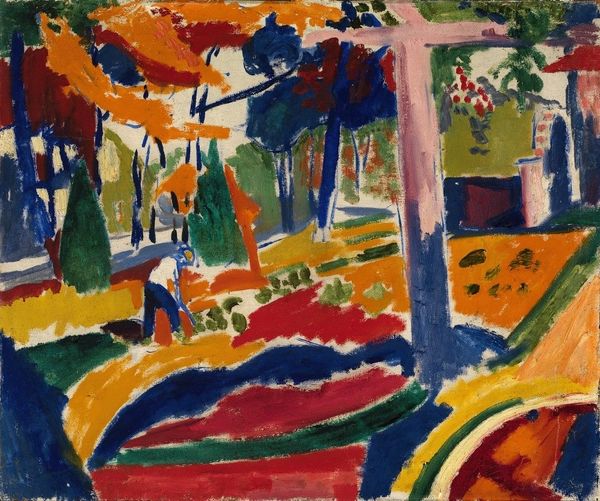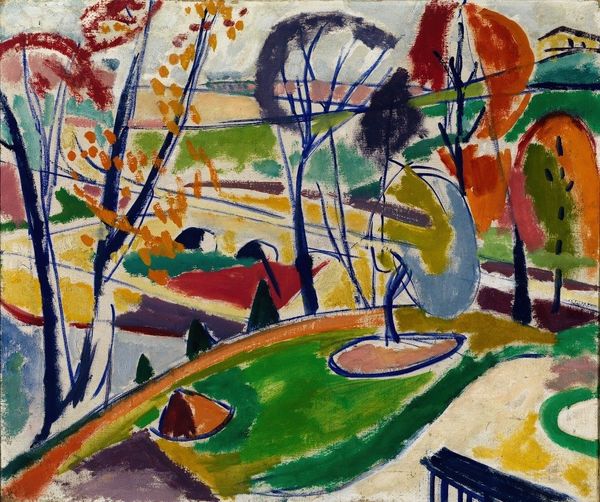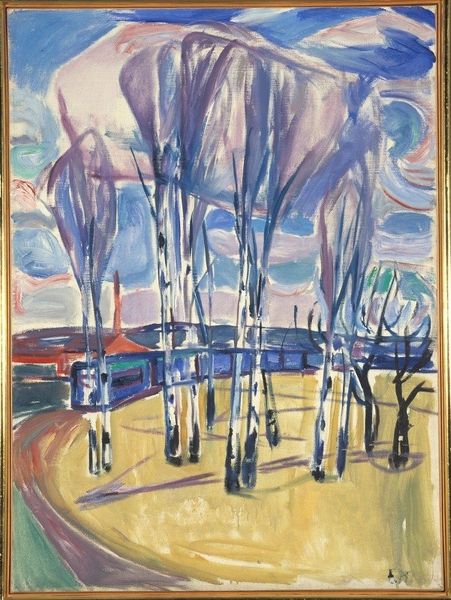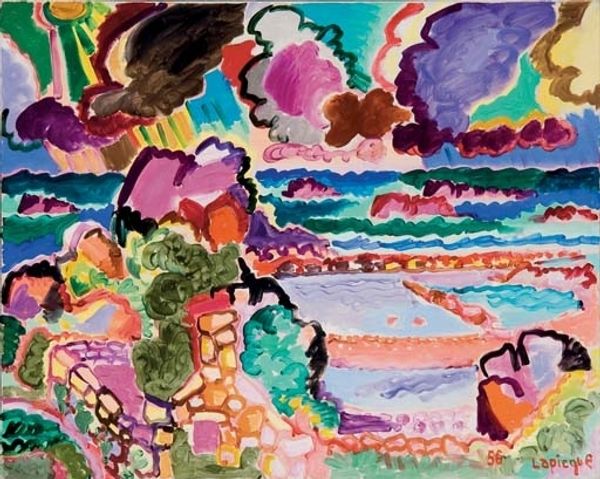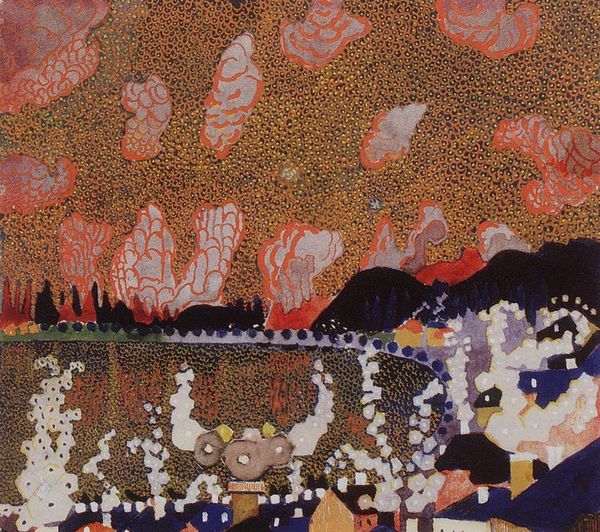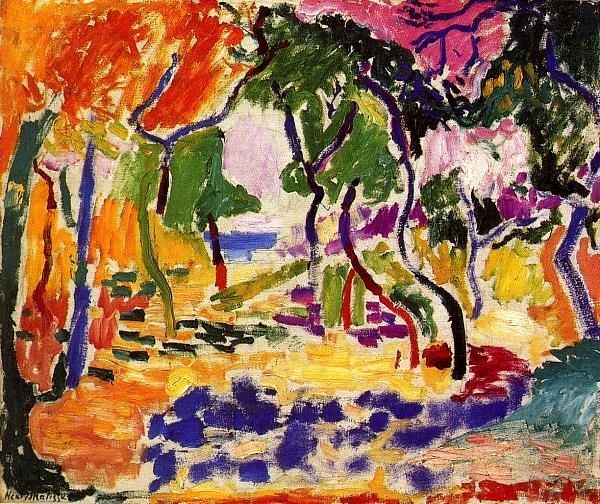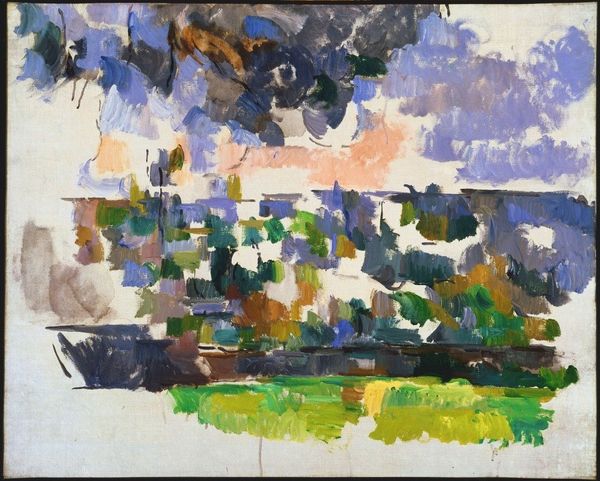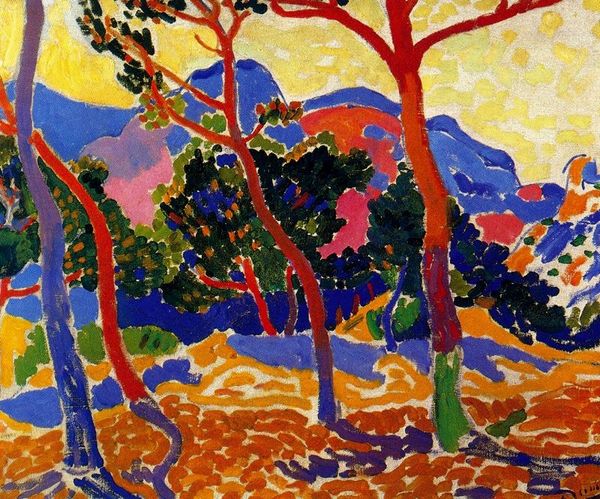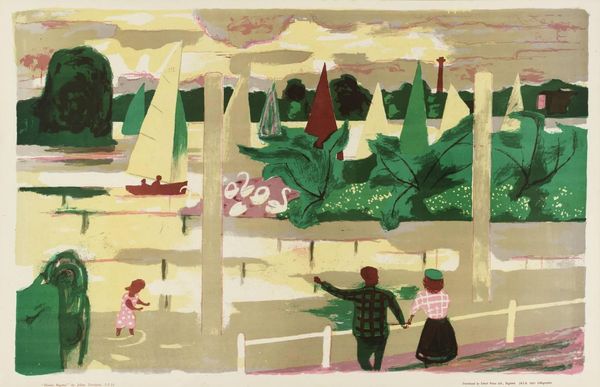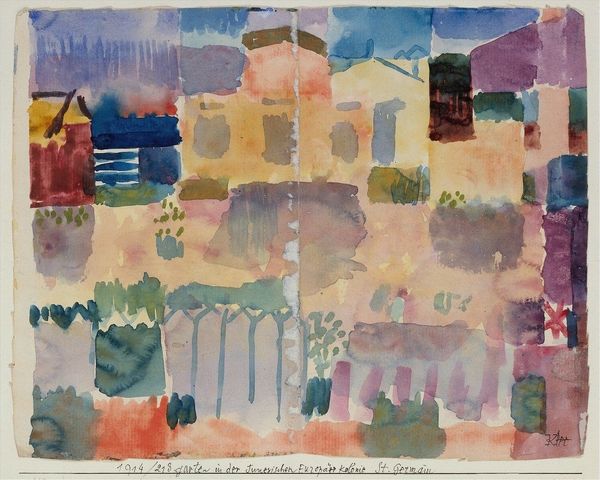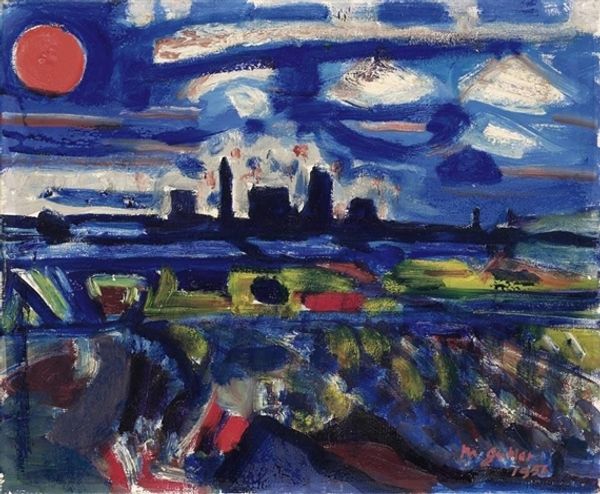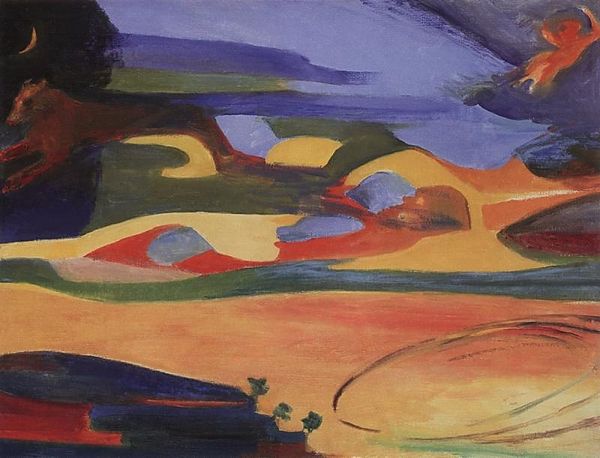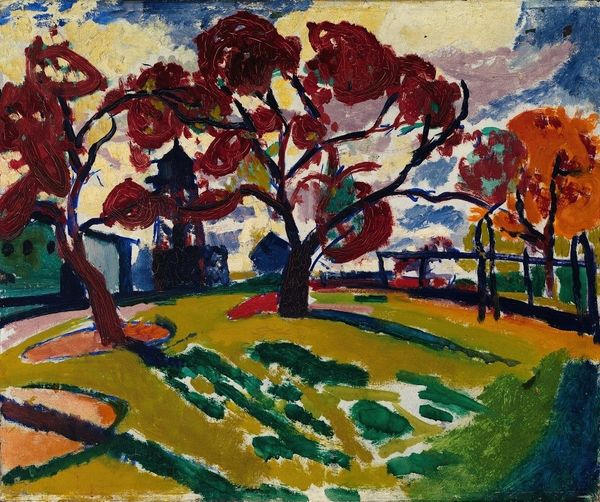
Copyright: Charles Lapicque,Fair Use
Curator: Looking at this, what’s your first reaction? Editor: It’s a vibrant, almost naive scene. The bold colors and simplified forms are quite striking; is this Venice as some idyllic memory? Curator: In a way, yes. What we’re viewing here is Charles Lapicque’s “Quai à Venise” from 1955. It's oil on canvas and embodies his distinctive take on post-impressionism, tilting towards an expressionist style. It pushes beyond the objective to give us something visceral and subjective about both place and time. I feel that its radical exploration of the means of representation provides an interesting social commentary on the place Venice had acquired in a Post WWII collective imagination. Editor: Definitely. Thinking about the material, I’m drawn to the layers. It speaks to how the physical act of applying the paint, those brushstrokes themselves, are vital to communicating both Venice's materiality—the density of buildings, the ever-present water—and the artist's labor, bringing it forth to our view. Curator: Absolutely, especially considering Lapicque's intellectual formation, originally trained as a scientist and then engaging with the avant-garde milieu. There's a conscious dismantling of traditional perspective. Those flattened planes, broken color and bold outlines—do you think there is more to be read here? Editor: I wonder if it reflects, in some manner, the post-war mood through the chosen material—it isn’t hyper realistic and perhaps intentionally disrupts any sense of perfect, untroubled realism; rather the opposite: it shows the raw components. Curator: I think you've nailed something crucial. It moves us to examine the emotional terrain post-war—anxious perhaps? The fractured image and disorienting perspectives could convey a subtle, yet profound cultural anxiety. Editor: Right. Beyond being just a visual depiction, Lapicque gives us an artwork, "Quai à Venise" of that era in which production becomes as important as reproduction of Venice in the cultural imaginary. It asks how Venice lives with that cultural role. Curator: Indeed, and to see how the art pushes against existing definitions opens interesting dialogues. Editor: It makes me question how this era reflects in its art’s materiality, as well as who decides what art represents history. Curator: Yes, I leave feeling like I now have another sense for it as part of a much bigger history!
Comments
No comments
Be the first to comment and join the conversation on the ultimate creative platform.
